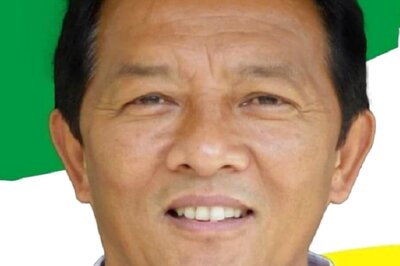
views
New Delhi: No, all homeless persons do not beg. They work. But yes, 51 per cent of India’s bonafide homeless are evicted by the police over five times over the course of a year. A striking majority of those evicted, 79 per cent, are victims of displacement due to no employment, finds the study ‘Enabling Inclusive Cities for Homeless’ that helps bust many myths around homelessness.
In its unpublished survey, the Indo-Global Social Service Society (IGSSS) studied homeless populations across 15 cities in five states, namely Bihar, Jharkhand, Andhra Pradesh, Tamil Nadu and Maharashtra to collect data vis a vis the three dimensions of urban poverty: residential, social and occupational vulnerability.
“Their lives are synonymous with poverty, vulnerability, exclusion, identity crisis, gender discrimination and exploitation and multi-dimensional deprivation,” reads the survey.
A separate study on 193 homeless shelters in Delhi was conducted by IGSSS in 2018 which revealed low capacity of shelters vis a vis the total homeless, unfriendly shelters for People with Disabilities (PWD), lack of drinking water facilities and understaffing.
According to the data, 46 per cent of the homeless are below the age of 35. A majority of this population are men. This reflects wastage of the productive age of learning and skill enhancement. However, a gendered outlook on literacy within this population tells that women are more vulnerable than men to find suitable employment.
In terms of religion, an overwhelming majority of 86.6 per cent of the homeless are Hindus, while Muslims and Christians form only 7.8 and 5 per cent, respectively. Among other nodal modes of identification, 66.4 per cent of the homeless have an Aadhaar card, while 37.3 per cent, 39.5 per cent and 27.7 per cent have a ration card, voter ID card and bank passbook, respectively.
However, the survey also found that 30 per cent of the total homeless population do not have any identity proof. “The Election Commission of India must develop the un-divertible strategies that homeless are counted and primarily voter ID cards are issues to each of the homeless,” the survey recommends.
Sonu P Yadav at the IGSSS spoke to News18, highlighting the need for a comprehensive study by the government on homeless. What the survey does is acknowledge one’s identity as the primary requirement for the state to ensure the social, economic and political justice, he said.
“Homeless populations have largely been neglected in the census 2011 due to their temporary habitation in the city. Accurate data on the number of homeless persons is missing, which leads to a failure of the policies designed for them because it never reaches the entire lot,” he added.
The study aimed to understand the status of services, entitlements, government policies, access to shelter and women specific challenges and violence by surveying the average 13 per cent of sample size.
The 2011 census places the base figure of the homeless at 1.7 million or 0.19 per cent of the total population. While this estimate reflects a 0.04 per cent decline among the homeless persons, it also records an increase in the number of homeless households: from 0.447 million families in 2001 to 0.449 in 2011, suggesting the rise of the nuclear family set up.
While the Indian census does not categorically define ‘homeless’, it explains ‘houseless households’ as those which do not live in buildings but stay in open or roadside, railway platforms, under flyovers, etc. Besides the macro-household data, the census does not collect any other data on these persons.
The IGSS study is a breakthrough in the current understanding of the homeless, for it captures multiple dimensions of homelessness in India. It found that Scheduled Castes comprise 36 per cent of the homeless, while Scheduled Tribes and Other Backward Classes make up 23 per cent and 21 per cent, respectively.
Interestingly, India’s homeless work, and work effectively, the study finds. The homeless work across 15 major occupations with construction labour topping the list. Rag picking, traffic light vendor, wedding or party catering, begging, cart pushing are among the other listed occupations.
These persons spend most of their earnings on food (95 per cent), toiler (32 per cent), alcohol/drugs (22 per cent), cigarette/beedi (21 per cent), water (16 per cent) and bathing (17 per cent).
With the homeless spending most of their money on fulfilling basic amenities, India’s commitment to provide housing all its citizens by 2022, with an aim to build 20 million urban units comes as a boon to them. However, before this humongous task is effectively completed, the homeless must be recorded and mapped to reduce their vulnerability.
The Housing and Land Rights Network (HLRN) highlights that homeless women, particularly young women, suffer the worst kind of violence and insecurity. They are also vulnerable to sexual exploitation and trafficking.
To tackle this, the National Urban Livelihoods Mission of the Centre developed a ‘Scheme of Shelters for Urban Homeless’ (NULM-SUH). It proposes a standard 50 square feet per person in a homeless shelter with facilities like drinking water, toilets, bath, cooking facilities etc.
That the survey recorded 45 per cent of homeless persons live in these shelters, while a majority of them spend their earning on these basic amenities violates the norms of the scheme.



















Comments
0 comment